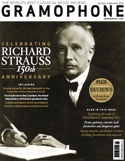Texte paru dans: / Appeared in:
*

GRAMOPHONE (02 /2014)
Pour s'abonner /
Subscription information
ZigZag
ZZT327

3760009293274 (ID342

Reviewer: David
Vickers
Gli Incogniti and Amandine Beyer have made significant ripples on the Baroque orchestral scene with their flamboyant and refreshing style, and now turn their attention to Corelli’s concerti grossi. Perfected over a number of years and prepared for publication by Corelli shortly prior to his death, Op 6 was eventually printed under the supervision of his partner and heir Matteo Fornari in 1714. This recording titled ‘The Complete Concerti grossi’ also presents two other works: a posthumously published sonata in four parts in G minor that lends itself to either chamber or orchestral forces, and the sinfonia Corelli provided for Lulier’s 1689 oratorio Santa Beatrice d’Este, some of which Corelli adapted into Op 6 No 6.
These performances, albeit with a
few patching sessions, were taped live in two concerts at the Arsenal in Metz.
Beyer observes that the sizes and constitutions of Corelli’s orchestras in Rome
varied between 10 and 100 players depending on the circumstances (we know that
the orchestra for Santa Beatrice d’Este numbered 80). Gli Incogniti’s
ensemble of 18 musicians is typical for most period-instrument recordings of Op
6, and, as with other classy interpretations in the distinguished discography
(too many to mention here), they confirm that Corelli’s mastery over concertino
and ripieno textures unlocks a kaleidoscope of sonorities and moods. There is
carefree elation in the concertino exchanges in the first and last Allegros
of No 4 (perhaps a bit too fast but never abrasive), and sincere yearning in the
Largo
of No 6 (labelled incorrectly as No 5 in the booklet). The concertino violins
and cello sparkle with conversational animation in quick music (the scurrying
cello lines are placed centre stage in the Allemandes of Nos 9 and 11), and slow
movements are always enriched by immaculately balanced suspensions and
gorgeously firm bass notes (the Grave of No 3). The ‘Christmas Concerto’
(No 8) typifies how Gli Incogniti paint a chiaroscuro of muscular zestiness (the
penultimate Vivace), melancholic sublimity (the heartfelt Adagio)
and refinement (the sweetly contoured emulation of shepherds’ zampognari
in the Pastorale). Entirely devoid of contrived preciousness or formulaic
complacency, this is simply magnificent.
Cliquez l'un ou l'autre
bouton pour découvrir bien d'autres critiques de CD
Click either button for many other reviews


